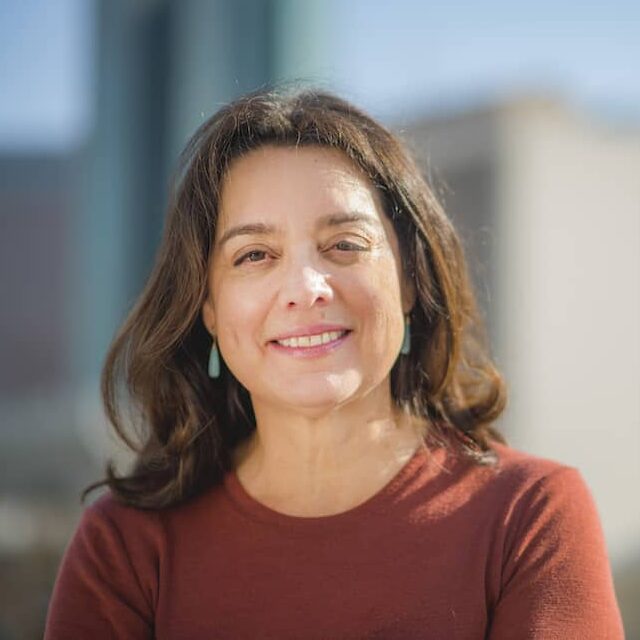Dear reader,
We at COLab think a lot — one could say “obsessively” — about readers, listeners and viewers of local news. We think about people we know and whom we can picture in our minds: those voracious clickers, hopping from local news site to site, the inquiring minds behind the wheel, the never-miss-an-edition watchers of the nightly news.
We think of the people we may never meet, who live in parts of the state we may never visit, though we hope to. We think about our work at COLab, the stories on which we collaborate, the stories by which our many newsroom partners connect with readers, viewers and listeners.
“Connect,” for us, has a very particular meaning. It is not just about providing people with information they need to be informed and engaged citizens, though that is our primary function. Connection is also about creating community. It is about building avenues in which (cue booming voice) “The News Outlet” is not communicating with readers from on high, a one-directional flow that reduces active communities to passive audiences. Instead we are looking for the give-and-take, for feedback, ideas, critique, conversation. COLab and its partners are seeking much more conscious, deliberate ways to ensure that all communities see themselves and their experiences accurately reflected in stories about them.
This recognition that the era of paper-doll coverage of communities, flat and one-dimensional, should have ended a long time ago collides with the current reality that so many local newsrooms are becoming smaller and whiter and so struggle to provide this kind of in-depth coverage.
I thought about this goal of building community and the barriers to it a lot — you might say I thought about it obsessively — while working with Liam Adams at The Brighton Blade. He came to COLab for help with a story he wanted to do on that city’s Hispanic community and its history. Liam came to us because Susan Greene and I, who function as COLab coaches, editors and partner reporters, have been reporters longer than he has been alive. Literally. (Which hurts me just a little bit to write.) But also because Liam is a white man and he knew he would have blind spots. He is also working in a three-reporter newsroom in which the third reporter is also the editor. It’s tough in those working conditions to pull off the kind of story he wanted to tell in “Making Space.”
The partnership that ensued over the course of a month or so is one I think underscores one of COLab’s goals. It speaks to how a motivated reporter, approaching a story with humility and responsive to guidance, can elevate his or her work. “I need help,” Liam told me. Three magic words that open the door to stronger local reporting.
“Tina pushed me,” he wrote in a note after he finished what became a three-part series. “There were moments working on the project when I wasn’t sure if it would publish or that it wouldn’t shape up as well as I hoped. After all, when I was reporting the story, I was also writing my daily news and juggling another project.”
I pushed him because that’s my job. And as Liam wrote: “Tina became my coach and she started by asking me a series of questions that challenged me to think harder about the story I wanted to tell and why I wanted to tell it … ‘History,’ she wrote me, ‘is much more powerful when you can tell your readers clearly why this particular history of this particular place matters at this particular time.’ The discussion that followed pushed the story into a different direction: a deeper series for Hispanic Heritage month.”
I share this with you not to pat myself on the back. Liam did the work and he did it with the humility, perseverance and the attention to detail required. I tell you this because what we are striving for here is local journalism in which we work hard to break down our own silos, in which we challenge our own preconceptions, in which we listen as well as inform. As COLab partner newsrooms — and, six months in, we are now up to 95 and counting — we seek to put aside competition when cooperation better serves our communities and we must be unafraid to say to you as readers, listeners, viewers, neighbors, fellow Coloradans and donors: We need help.
A final thing. Liam wrote about the Kitayama Carnation Strike of 1968-69, a work action at the flower farm led by Latinas who chained themselves to the fence in a demand for higher pay and better working conditions. A woman who regularly came into the Blade offices to pick up the weekly paper told Liam that she was one of the strikers he had named in the piece. Her name is Rachel Sandoval. It was one of those exquisite moments in which past meets present, when you are reminded as a reporter that part of the privilege of this work can lie in something as simple as naming someone so that others can know who she was and what she did and why it mattered.
As Liam put it: “I wanted to tell a story of a community that has long been part of Brighton and to encourage conversation and connection between old and new, white and Hispanic.”
We at COLab are proud to be part of that effort.

Tina
This post was sent as a letter to our email subscribers on Saturday, Oct. 24, 2020. Join our email list to learn more about COLab and the work we are doing.




